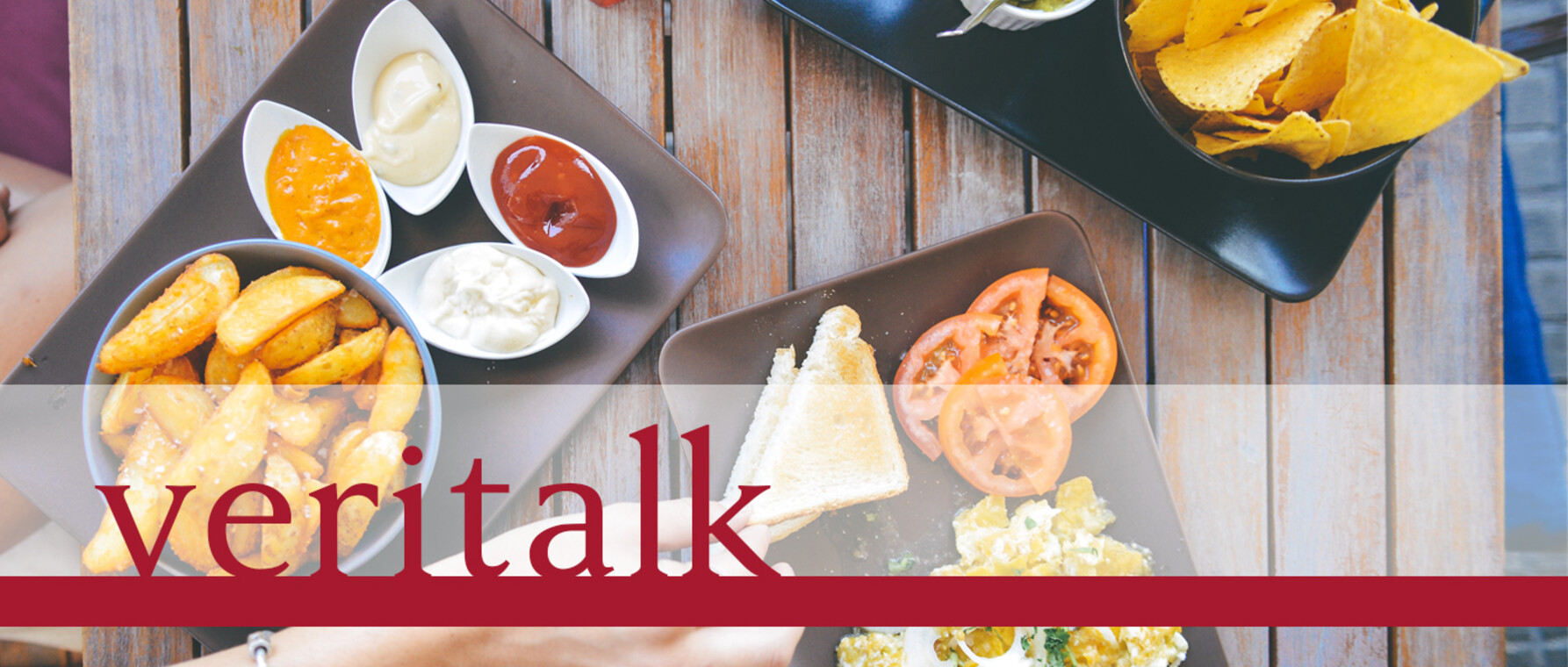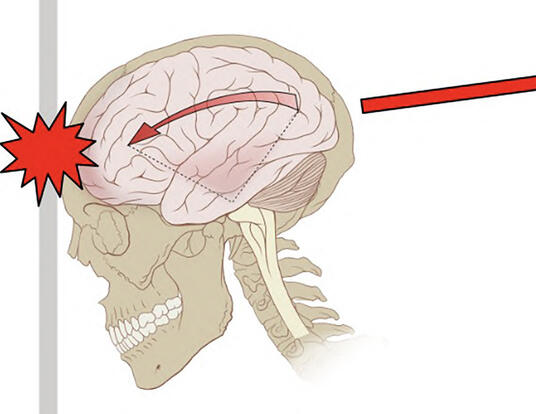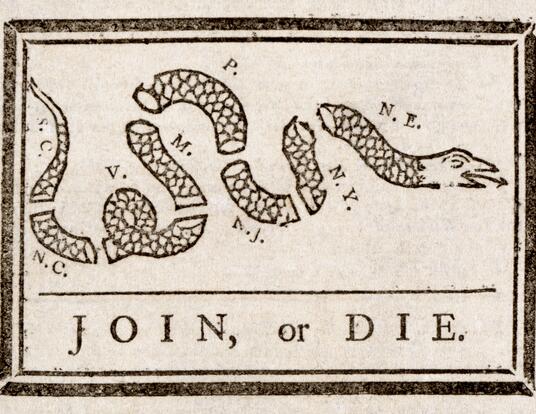Turmeric Lattes and Chicken Tikka Masala
A simple bowl of lentils inspires a PhD student to ask questions about food, diaspora, cultural appreciation, and cultural appropriation.

After moving to the US from Mauritius, PhD candidate in Romance Languages and Literatures Nikhita Obeegadoo felt homesick. Her experience eating a bowl of dal (spiced lentils) in the US led her to ask questions about food and diaspora, cultural appreciation, and cultural appropriation through a course she designed and taught called "Translate the Menu, Please."
Interview Highlights:
"I think of literature in very broad terms. And if you think of food as a way in which people are trying to kind of give a sense of their identity or retell stories from home, I think there is a way to look at it with the same kind of attention. . . So at one level it's just a basic human need for survival that everybody has. At the same time, it's so emotional. We associate it with specific times in our lives, specific people, specific emotions. There's so much that we can remember through food." - Nikhita Obeegadoo, on food as literature.
"Culture is always changing, culture is always evolving. There is something unrealistic in expecting food to just stay the way it is." - Nikhita Obeegadoo, on food and diaspora.
Full Transcript
Anna Fisher-Pinkert: From the Harvard Graduate School of Arts and Sciences, you’re listening to Veritalk. Your window into the minds of PhDs at Harvard University. I’m Anna Fisher-Pinkert. For the next few episodes, we’re going to be talking about food: what we eat and why we eat it. This week is both Passover and Easter and a lot of us are going to be dusting off recipes that we use once a year, making foods that are special or ceremonial in some way. My family is Jewish--we’re originally from Poland and Lithuania--and even though my family has been in America for four generations, I still feel like I’m a part of the Eastern European Jewish diaspora. And food is a really big way that I connect to my Jewish identity. So, I wanted to understand more about the connection between food, culture, and the movement of people around the globe. So I asked Nikhita Obeegadoo.
Nikhita Obeegadoo: I study contemporary literatures of diaspora and migration. So essentially what this means is I'm fascinated by the stories that people tell about movement, about moving and why they've moved and how they've moved, and I’m interested in the forms that these stories take and what they can tell us about, you know, changing identities and the range of human emotion and the world that we're living in today.
AFP: Nikhita is a PhD candidate in Romance Languages & Literatures at Harvard, and diaspora is a really tricky term. So the definition we’re going to go with for today is that it encompasses both people who have moved from their place of origin to the place they live now, and people who have a long history in the place where they live, but either self-identify or get identified as “other” because of their race, religion, ethnicity, etc.
AFP: About five years ago, Nikhita came to the US for the first time and had an experience that got her thinking about the connection between diaspora and food.
NO: So I come from Mauritius, which is a small island in the Indian Ocean where there is a very strong Indian influence.
AFP: One day, she's at an Indian restaurant, and she sees that they have dal, spiced lentils, on the menu.
NO: And, you know, it immediately struck a chord and I was feeling homesick anyway, so I was like, OK I'm going to have this home food. And I go and I sit down and I realize it's completely different from what I know. It has so much more cream, it's so much more-- you know the spices are different. It's really, really good. It’s just not what I associate with dal.
AFP: I think everyone has a version of this experience. My friends from Brooklyn scoff at the bready “bagels” that you can get some places in the Midwest or in the frozen foods aisle. And my Austrian mother-in-law has had some very unkind words for strudel that is not made the traditional Viennese way. Now, most of us take these kinds of experiences for granted, but not Nikhita. Nikhita thinks that we can apply the techniques that we use to understand literature to understanding food.
NO: So I think of literature in very broad terms. And if you think of food as a way in which people are trying to kind of give a sense of their identity or retell stories from home, I think there is a way to look at it with maybe the same kind of attention. And one thing that I find fascinating about food is it’s accessible on so many levels. So at one level it's just a basic human need, right, for survival that everybody has. At the same time, it's so emotional. We associate it with specific times in our lives, specific people, specific emotions. There's so much that we can remember through food.
AFP: Nikhita’s dissertation isn’t about food, but here at Harvard, GSAS graduate students can teach classes during winter break on topics that are kind of off the beaten path, and that’s how she decided to blend her love of food and her love of literature into a class she designed called “Translate the Menu Please,” which is all about cuisine and diaspora. One idea that kept coming up in class was “authenticity.”
NO: Yeah! What does it mean to say I'm looking for authentic Indian food, or this place is very authentic, or this place is very ethnic. I think when we use the word authenticity we're kind of passing a judgment on what is real or not. And you can already start seeing how problematic such a judgment would be, right. Who gets to pick what is authentic or not? But when you use the word authentic, often what we're saying is, does this match the expectations that I had? So often it says more about you and about the expectations or the preconceived ideas that you have, and whether a cuisine matches that or not becomes a determining factor of whether or not it’s authentic.
AFP: OK, these are some big, weighty concepts. So I wanted to take Nikhita out of the studio and visit a place where a lot of us have our first encounters with new kinds of cuisine:
[transition into grocery store scene] I think I wanna start in the frozen prepared section.
AFP: The frozen foods aisle of a major grocery store chain.
[inside the grocery store] What do we have here?
NO: We have Thai yellow curry sauce just on top of vegetable fried rice, Japanese stir-fried rice, chimichurri rice, Kung Pow tempura cauliflower.
AFP: I feel like we've been through, like, three to five different cultures in, like, one case.
AFP: There's, like, that seafood paella, so we've got Spain. Oh, this is Peruvian-style chimichurri rice. So we've got Spain, Peru, and Japan all next to each other. What does that say to you about, like, looking at a frozen food case that is representing--is purporting to represent a whole bunch of different cultures simultaneously.
NO: Well, I think there is something beautiful about it, right. The idea that you can literally just go to the Trader Joe's next door and find such a wide variety of food. I think there is something also positive about the fact that this is recognized as being from these different places, right. But I also think that there is a tendency in general for us, as people, to think in binary terms of "us" and the "other," and when we think of the "other," we don't necessarily think of the differences between cultures or, in this case, it would almost seem like we are in the “other” section.
AFP: But foods don’t always stay “other.” Some immigrant foods become staples of a host country’s diet. Like Italian food in America. In Great Britain, the food that embodies that leap from “other” to “ours” is chicken tikka masala. In 2001, Robin Cook, then the foreign secretary of the UK, gave an address to the Social Market Foundation in London.
NO: It's literally now called his "chicken tikka masala" speech.
AFP: He began with the words, “Tonight, I want to celebrate Britishness.” And he went on to talk about Britain as being composed of an ever-changing array of multicultural influences. His go-to example of multiculturalism in Britain? Chicken tikka masala. I asked Nikhita to read a little section of that speech out loud.
NO: So he says, “it is a perfect illustration of the way Britain absorbs and adapts external influences. Chicken tikka is an Indian dish. The masala sauce was added to satisfy the desire of British people to have their meat served in gravy.”
AFP: Nikhita doesn’t think that Robin Cook was wrong to bring up chicken tikka masala as this multicultural food. But, she thinks we need to read between the lines.
NO: So, in the sentence, Britain is the subject and the verb is absorbs and adapts, right. So, Britain is absorbing and adapting, right. And, I think, in recent years, it's becoming increasingly common and I think it's increasingly important to, yes, take that into account, but also look at the other side of the coin to how immigrants, you know, have agency in what they're choosing to present and what they're choosing to change and what, you know, they're just not choosing to bring to the table. So if you look at Chinese restaurants, for example, there was a huge, there was a need to make Chinese food palatable in a certain way to the American public, and a lot of the dishes that we today think of as Chinese are in fact very Chinese American. They were created here to cater to the tastes that people had over here.
AFP: What Nikhita is saying is that immigrants themselves are often the ones who swap out ingredients or make changes that make a food seem “inauthentic.”
NO: Culture is always changing, culture is always evolving. There is something unrealistic in expecting, you know, food to just stay the way it is. And in class we looked at a variety of different materials that had different takes on that. So one of the cookbooks we looked at, for example--it was an Indian cookbook, right. It was written by an Indian American. And he had all these, you know, Indian recipes. He had some fusion recipes. And at the back of the book he had a little section which said, “Well, don't be scared about the ingredients. All of these ingredients are available at your grocery store. You don't have to go to some, you know, obscure Indian store to find them.” And he talks also about how his own mother had to, for example, substitute a bunch of ingredients in order to keep making those dishes.
AFP: I asked Nikhita if food wasn’t a little bit different than literature. I mean, you can bring your copy of your favorite book from one place to another, but you can’t exactly reproduce the dish your mom made for you when you were five.
NO: Well, it’s reproducible, I think, in a physical sense, often. So if you have the same ingredients or you have the same recipe. But food isn't just food, right, it's also about memory, it's also about, you know, the people you're sharing it with, it's also about how you're having it. And very often it's in our memories, in our hearts, and, you know, in our psyche.
AFP: Sometimes, seeing what Nikhita calls a “home food” become popular or trendy can turn from cultural appreciation to cultural appropriation, or at least make things feel pretty awkward for immigrants and their kids. Take the turmeric latte, AKA golden milk, AKA “haldi doodh.”
NO: Haldi is turmeric and doodh is milk. For many people, it's kind of this like magic potion in a way that, you know, just has so many benefits, right-- if you're jet lagged, that's what you should have. If your throat hurts, that’s what you should have. That's something that, you know, growing up for me, like, didn't taste especially good. I was really surprised a couple of months back, I think, when I saw it on the menu of one of these, you know, kind of hippy-like, smoothie and acai bowl-like, healthy yoga places, yoga branch places, under the name tumeric latte, right. And when I went online and just found a lot written by people in the South Asian community kind of talking about this trend, about this idea of, well, this is something that we grew up having and, not just that, we've often been laughed at for having, right. Like, it looks weird, people see us having it at school, for example, and, you know, that's something they're going to laugh at, they're going to bully us because of it. And today people are going to pay six dollars for that latte.
[ambient noise and music inside the grocery store]
Trader Joe’s Employee: Yeah. What are you looking for?
AFP: Well, actually, is there a tikka masala anywhere?
TJE: A what?
AFP: Chicken tikka masala anywhere?
TJE: Chicken tikka masala. Let me ask.
AFP: Oh don't worry about it. We'll find it.
TJE: No no no, I'll ask.
AFP: No no no, don't worry about it. Oops.
TJE: Here you go.
AFP: Thank you so much. All right. OK, so now we're in, like, masala central. So what do we have here?
NO: Oh, we have--so we have lamb vindaloo with the subtitle "lamb in spicy curry sauce with basmati rice," so we can see how there is a kind of translation going on already, right. So for people who already know what vindaloo is, that's it. That's all they have to eat. But, for everybody else, there is this kind of, you know, little two-sentence explanation of what it is, which I think already gives an idea of the, you know, wide public that such packaged food would be targeting.
AFP: I also think it's interesting that the chicken, in light of what we were saying before about the chicken tikka masala being a British dish and being a fusion, that that too has authentic Indian recipe stamped on the front.
NO: Yeah, like, today, I think it's safe to say that the people who eat chicken tikka masala and the people who enjoy it, even the people who cook it at home, you know, live in many different places and come from many different places. Does the fact that chicken tikka masala has its origins in India going to make it be called Indian or authentic Indian forevermore, or is there something that's going to happen that's akin with spaghetti and meatballs in the US?
AFP: So, tell me what you wanted to show me over here?
NO: We’re in front of this package that says “Trader Joe’s Indian Fare, Madras lentils." And, what’s interesting, is that Madras is a region in South India.
AFP: Would you ever see someone in Madras calling something Madras lentils?
NO: Well, no. Just the same way over here you can see turkey burgers, right. And if you were go to Mauritius, for example, you would definitely see something like American turkey burgers.
AFP: So I asked Nikhita if this abundance of translated, or maybe even mistranslated food was a good thing or a bad thing. And she wouldn’t really say either way. But she did say this:
NO: So I think it’s amazing that Trader Joe’s Madras lentils is available for $1.99 at such a cheap price, and I think it’s incredible that people would get to try it out, you know, in that way. But I do think that that has to be the start of cultural encounter, and not be the place where it stops.
AFP: Nikhita left me alone in Trader Joe’s.
[AFP inside the grocery store] Oh yeah, I'm in line, yeah sorry.
AFP: I ended up buying myself a bon me inspired bowl for lunch, and it didn’t taste anything like a bon me. But then again, who am I to say what a bon me is supposed to taste like?
Next week on Veritalk, we’re going to take another look at food and identity, but this time, the menu is a little bit different.
Nina Gheihman: Within the sort of vegan movement, the terms that are preferred are cell-based meat, or clean meat--some people call it “cultured meat.”’
AFP: Next week, Veritalk goes Vegan!
Veritalk is produced by me, Anna Fisher-Pinkert.
Our sound designer is Ian Coss.
Our logo is by Emily Crowell.
Our executive producer is Ann Hall.
Special thanks to Nikhita Obeegadoo, and the PRX Podcast Garage.
You can find us online at gsas.harvard.edu/veritalk. You can also send us an email with your feedback: veritalk@fas.harvard.edu. If you just can't wait for more Veritalk, go back to our archives. There are stories about mermaids and monsters and immigration and disaffected teens. And, if you like what you hear, rate and review us wherever you're listening right now. It really makes a difference.
Logo by Emily Crowell
Get the Latest Updates
Join Our Newsletter
Subscribe to Colloquy Podcast
Simplecast





